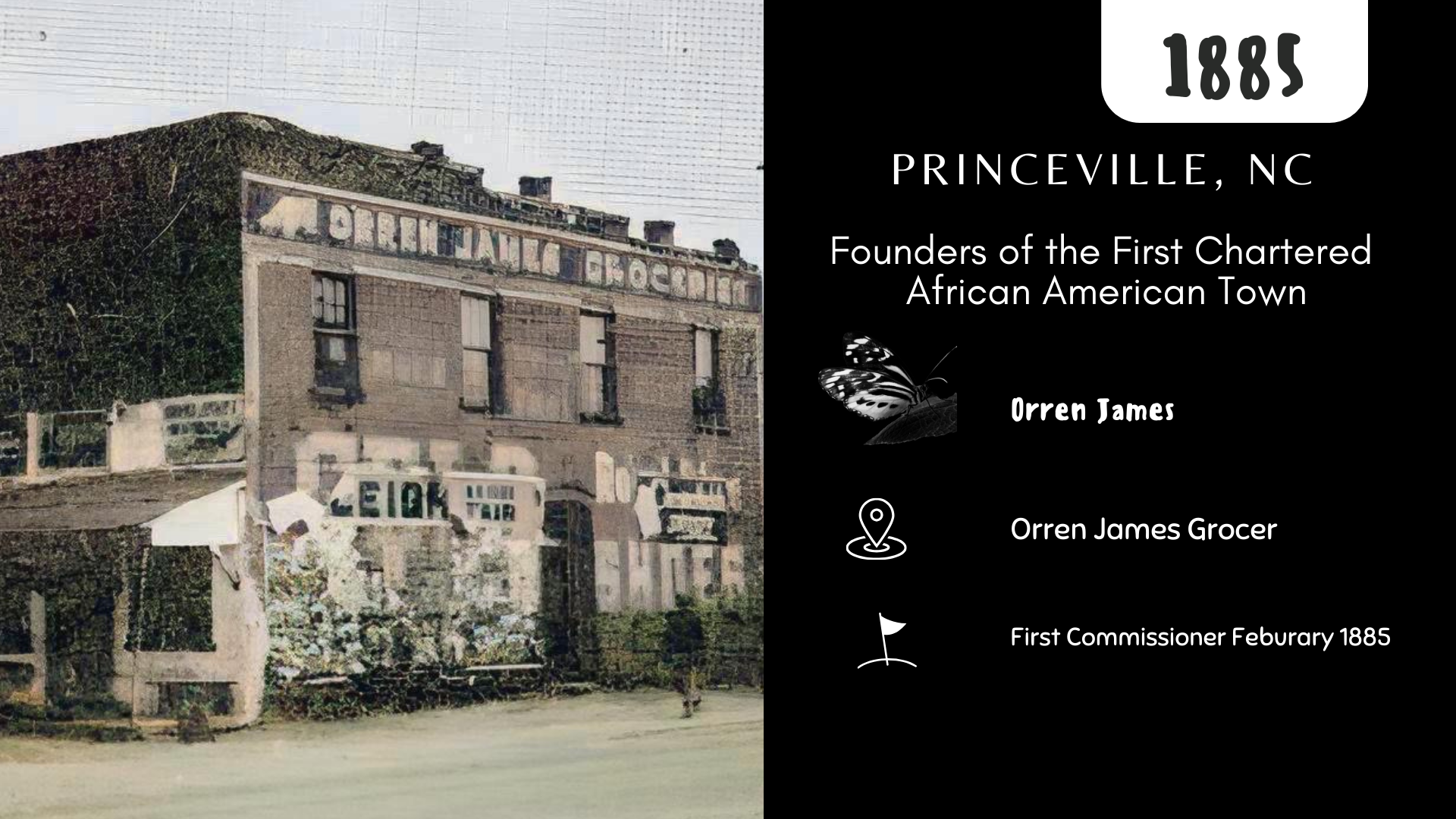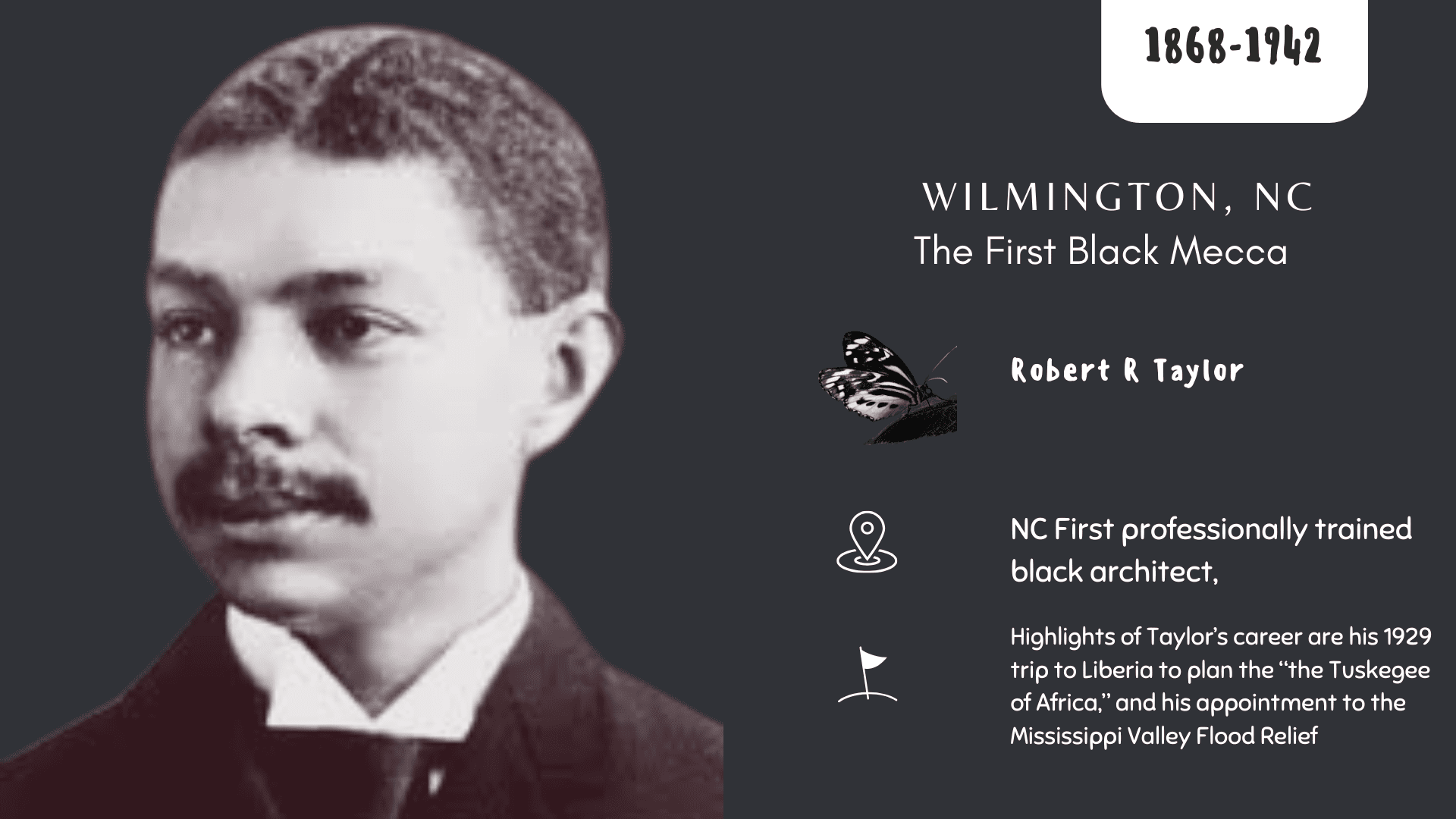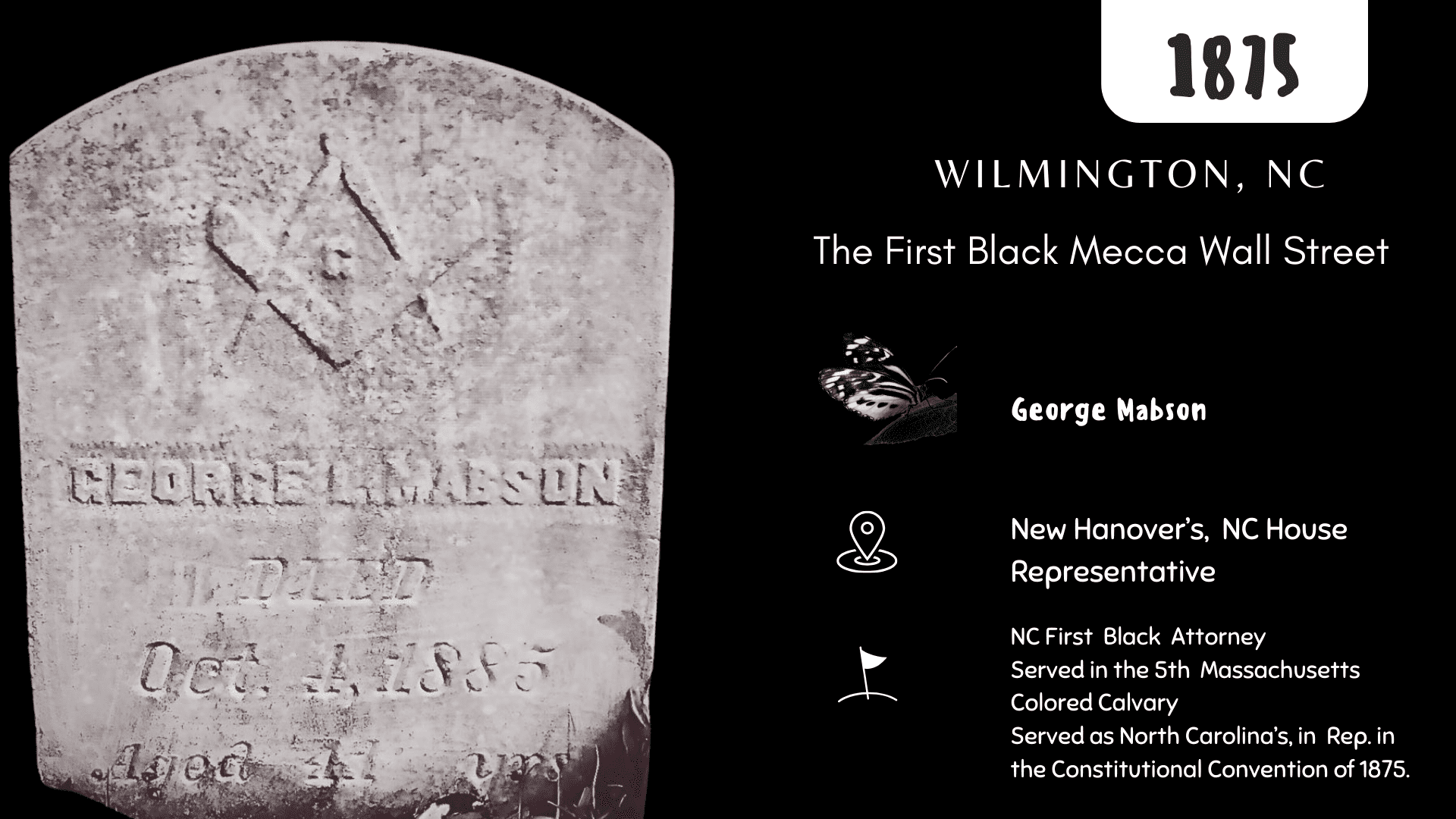Black Butterfly
There are so many beautiful stories of black towns and communities during the late 1800s -1940’s. We can’t wait to share them by highlighting the leaders, the businesses, and the structures.
Liberty Hill Freedom Hill/Princeville
Princeville, founded by former enslaved people after Union soldiers went north and left them the land, became the first black town in the state of North Carolina. It rivaled Roanoke Island, Dare County, James City, NC, and Eatonville, Florida. With a little over 300 citizens, the community was also home to eight carpenters, seven blacksmiths, four grocers, three seamstresses, and three brick masons. Princeville established a public primary school in 1883 with black principals educated at northern institutions like Oberlin and Yale. An attempt to annex Princeville with Tarboro, NC, was made in 1903 by white supremacists and the local newspaper. The first Mayor, Orren James built a grocery store, naming it after Turner Prince, an African-American carpenter, for his carpentry work and for building the town’s first few homes. The Prince was born a slave and became one of the town’s first residents - and its namesake. His story was common during the late 1800s when black towns appeared to have a thriving economy just shortly after being enslaved.
Wilmington
One of the most thriving and most populated black towns in the South during the late 1800s provided a safe haven for African Americans to start any business they desired or any business the community needed. It was just 20 years after enslavement, and many black businesses opened up in eastern North Carolina. We hope you will visit this amazing site to discover the deep roots of African Americans in Wilmington. Notably, some Wilmington natives became the state’s first black professionals in their field: Attorney George Mabson, Dr. James Francis Shober, and the nation’s first black professionally-trained architect, Robert R. Taylor.











